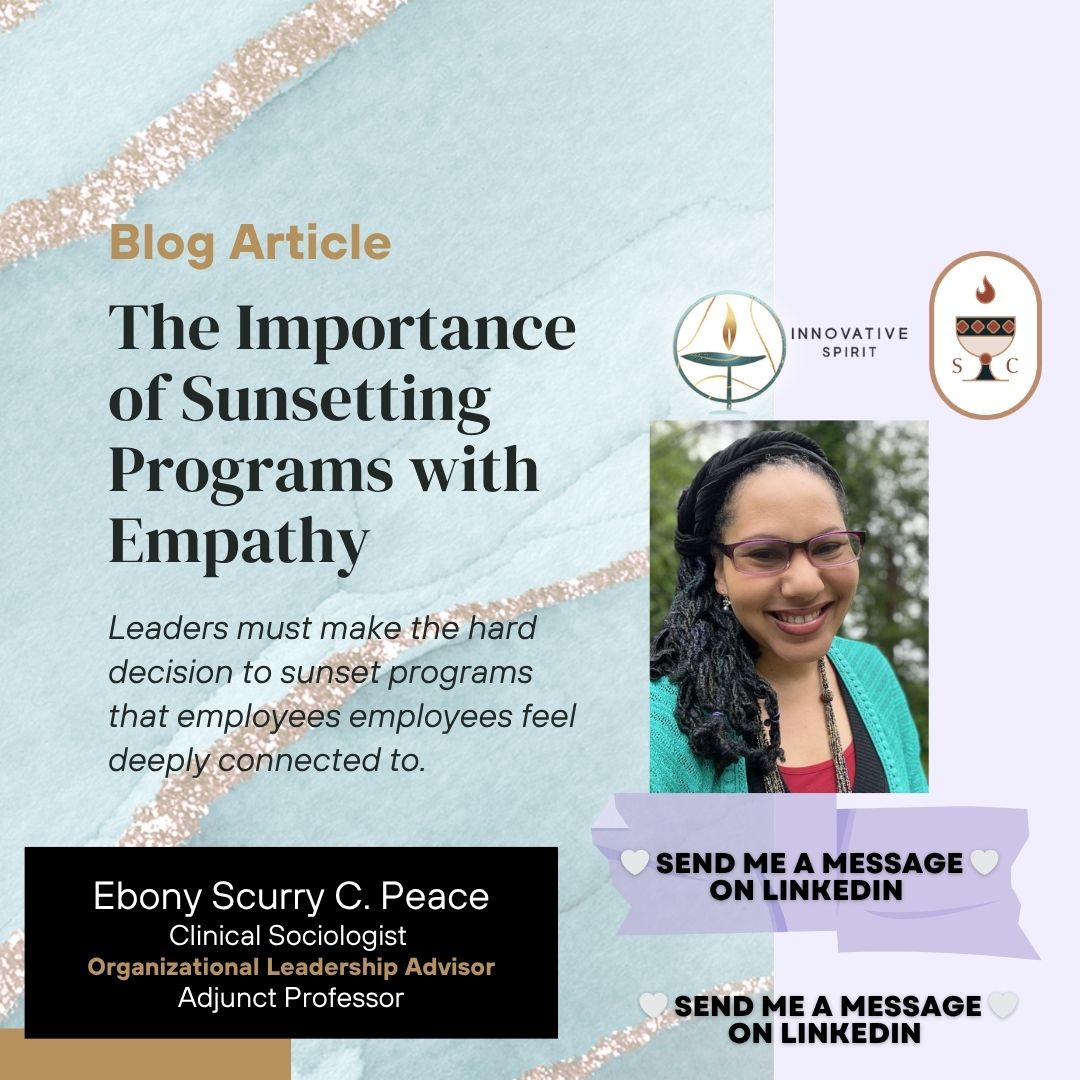The Importance of Sunsetting Programs with Empathy
- Posted on Jul 22, 2025

We often hear that “The act of letting go is not just about removing the negative; it’s about making room for the positive.”
In many chases this is true, but it’s important to remember that sometimes what we need to let go may not necessarily be negative or bad. It may just be that it has served it’s purpose, and that is alright. This is about letting go of the good to open our organizations up to what’s great.
I see this most often when it comes to tried-and-true workplace programs that have been successful in the past, but have been declining based on their program evaluations.
These programs may have been extremely beneficial in the past – i.e. creating the change the organization was looking for. However, an outstanding program that worked then doesn’t always work the same in the present as time, people, or organizational culture change. Not to mention the external environment that impact our organizations. Leaders must make the hard decision to sunset programs that employees and staff may still feel deeply connected to for various reasons.
Managing change like this is about recognizing the hard work that went into the program, demonstrating gratitude for the change it facilitated, and being creative about how you might create a safe space for employees to lean into the grief that comes with it all.
Most of the time I see leadership wanting to replace the old with the new right away, with the goal of encouraging people to “forget” and move on from the past. In these cases, I find myself encouraging leadership to facilitate a deliberate space between the past and the future.
This allows whatever new is on the horizon to stand fully on its own instead of being perceived as the “replacement”. When employees experience a “replacement” without the chance to give gratitude and properly grieve, they often experience resentment that stifles positive feelings and willingness to support the change.
Change management starts before a change is announced and implemented. It’s about emotions, transparency, and strategy. Let’s keep front and center that facilitating organizational change is more about supporting people through change versus the change itself. From here, we will see that once implemented, the changes we want to see are not only embraced, but end up being deeper and longer lasting.
What program in your organization is long overdue for being sunset because it’s deeply beloved?
In organizations that are authentically people-centered, consider the five stages of grief are explained by Elisabeth Kübler-Ross and David Kessler: denial, anger, bargaining, depression, and acceptance. How might you center your people through the lens of these stages in the workplace?
🌺 Looking for a keynote speaker, workshop facilitator, interim leader, or inclusive sexual harassment training that satisfies requirements in all states? DM me today so we can set up a time to discuss your needs.
